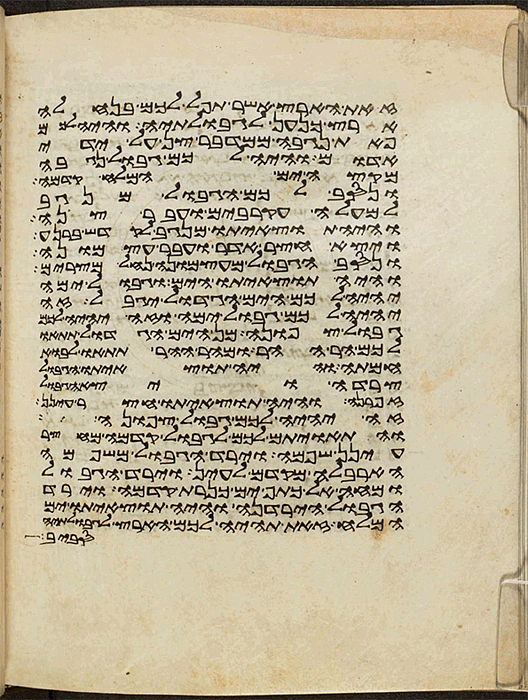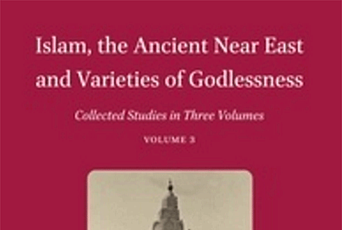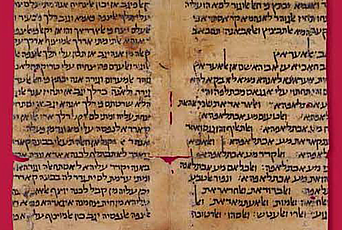Is a qibla a qibla? Samaritan Traditions About Mount Garizim in Contact and Contention

The emergence of Judaism is closely intertwined with the emergence of Samaritanism. Both are heirs of ancient Israelite traditions, and the predecessors of both shared the same religious and literary culture. Until the second century B.C.E., this common world seems to have accommodated great religious diversity in many respects, among them the question of the holy center of Israel: Although most adherents of the Israelite traditions agreed upon the general concept of one place being chosen by God as his sanctuary, the concrete localization and identification of this place was controversial. Most prominently in this regard, the Israelite sanctuaries of Jerusalem and Mount Garizim had been co-existing since at least the sixth century B.C.E., both offering a regular temple service operated by priestly elites, and both attracting followers from their respective vicinities and beyond. This consensual co-existence, controversial as it certainly often was, ended in the late second century B.C.E., when John Hyrkanos, the Hasmonean leader of Judah and at the same time High priest of the temple in Jerusalem, sent his army to destroy the sanctuary on Mount Garizim. It was at that time and in this milieu that the previously non-pursued exclusive focus on either Jerusalem or Mount Garizim as Israel’s sole sanctuary became decisive for the followers of both sanctuaries, leading to the emergence of a Jerusalem-focused Judaism versus a Mount Garizim-focused Samaritanism as two distinct sects in opposition to each other. Although Jews and Samaritans continued to share many elements of their common heritage, and although Jews and Samaritans often lived side-by-side, the two also became deeply separated by their respective beliefs and their different religious cultures.
The claim for one sanctuary exclusively chosen by God goes back to the Book of Deuteronomy. According to Deut 12:5 and several similar verses, the holiness of this place is the result of God’s will “to establish his name there.” However, the text of the Book of Deuteronomy also bears witness to the diversity prevalent before the second century B.C.E.: According to the Jewish Pentateuch, God “will chose” this place, while according to the Samaritan Pentateuch, it already “was chosen,” but what today appears in two distinct textual traditions of the Pentateuch was part of the same literary and textual culture until the second century B.C.E., when both readings existed as variants side-by-side. Similarly, the first altar that the Israelites were commanded to erect after entering the Holy Land, according to the Book of Deuteronomy, is localized on Mount Ebal within the Jewish Masoretic text, but on Mount Garizim in the Samaritan Pentateuch (Deuterony 27:4–5):
“So when you have crossed over the Jordan, you shall set up these stones, about which I am commanding you today, on Mount Garizim [SP] / Mount Ebal [MT] and you shall cover them with plaster. And you shall build an altar there to the Lord your God, an altar of stones on which you have not used an iron tool.”
According to the context (Deuteronomy 27:11–20), Mount Ebal is the mountain of cursing, while Mount Garizim is the mountain of blessing, implying that this first altar either is transitory, to be replaced in the future, as the reading of the Jewish text suggests, or represents God’s lasting and eternal choice, as the Samaritan text holds.
These differences correlate with an additional one: Jerusalem is never explicitly mentioned in the Pentateuch and thus the Jewish identification of Jerusalem as the chosen place is created only through texts outside the Pentateuch, most prominently 1 Kings 8:16 // 2 Chronicles 6:5:
“Since the day that I brought my people Israel out of Egypt, I have not chosen a city from one of the tribes of Israel, to build a house for my name to be there, but I chose Jerusalem for my name to dwell there, and I chose David to be over my people Israel.”
Therefore, the Jewish identification of Jerusalem as the holy center of Israel is achieved only through paratexts to the Torah, even if later Jewish exegesis and theology further strengthened and elaborated this link.
The Samaritan identification of Mount Garizim as the chosen place, on the other hand, is present in the Pentateuch, most prominently in its Samaritan version. Thus, within the Samaritan Pentateuch, the election of Mount Garizim as the holy center of Israel is part and parcel of the Torah itself, as opposed to the Jewish text. And on the basis of the narrative of the Pentateuch, as contained in the Samaritan version, the divine order to establish the center of Israel’s worship on Mount Garizim is part of the laws revealed on Mount Sinai. Nevertheless, the Samaritan Pentateuch too provides its own significant challenges to later readers and interpreters. One such problem emerges from the Deuteronomic centralization concept itself: According to the text of the Samaritan Pentateuch, God had already chosen the holy place by the time Moses addressed the people of Israel in his speeches presented in the Book of Deuteronomy. The exact reference point for the Samaritan past tense, however, is unclear and it leaves open exactly which event the text alludes to. Samaritan midrashic exegesis has been aiming to fill this informational gap, and the results can be found in multiple literary sources, most importantly in Samaritan liturgical poetry, and in the Samaritan midrashic collection Tebat Marqe (“Marqe’s chest”). Both originate in the period when Aramaic was the language generally used as vernacular and for literary compositions amongst the Samaritans (first century–eleventh century C.E.). Above all, the divine election of Mount Garizim as the holy center of Israel is understood as having been predetermined by God already during the days of creation, according to Tebat Marqe (TM II:44):
“The Good mountain [i.e. Mount Garizim] is the holiest of all mountains, and its holiness began from the beginning of the act of creation.”
Since Mount Garizim originates at the beginning of creation, other creatures could acquire holiness through it, most notably men (TM II:44):
“Adam, whom God created from the dust of the Good mountain, is the choicest creature, and the Good mountain is the choicest elevated land.”
Thus, the elevated status of men as opposed the other creatures is achieved through and subordinated to the holiness of Mount Garizim. In light of this historical priority of Mount Garizim as the Holy place, it seems only consequent that the Samaritan tradition localizes every altar mentioned in the Pentateuch at this mountain or in its immediate vicinity, e.g. the altar that Noah built after the flood (Genesis 8:20), Abraham’s altar at Shechem (Genesis 12), the altar on Mount Moriya, where he bound Isaac and offered a ram (Genesis 22), or the place Bethel (“House of God”), where Jacob saw in his dreams a ladder to heaven (Genesis 28).
The identification of a given place from the Biblical tradition with Mount Garizim is of course not only operative in one direction, but motivates a complex intertextual dynamic: The given Biblical site, on the one hand, provides a geographical setting well known to the reader, within the horizons of the sacred geography of the Samaritan community. Mount Garizim, on the other hand, is associated with a narrative through which it acquires additional historical and theological meaning. Thus, for example, the role of Bethel within the story told in Genesis 28 is conferred on Mount Garizim, which therefore is understood as a place of revelation and encounter with God. In a similar way, Mount Garizim is endowed with a multitude of further attributes found in the Biblical stories about holy places, as summarized in Tebat Marqe (TM II:48):
“[Mount Garizim] is the house of God and the dwelling place for his glory. There is no divine presence but on it […], and there is no sacrifice but towards it, and there is no offering but on it, and there is no gift but at it, and there is no willing offering, and no tithe, and no first-fruit, and no ransom. And blessing is never received except from it. Because it is the place of the divine presence of the True one, and the encampment of the Great glory.”
Not surprisingly, Mount Garizim also plays a central role in the Samaritan concept of sacral history, which discerns three fundamental epochs:
1. The era of divine favor (ra’uta), from the time of the creation to the entrance into the promised land. During that period, all of Israel had been focused on Mount Garizim, which bestowed upon it blessing and divine favor.
2. The period of divine disfavor (fanuta) began with the split between those Israelites, who left Mount Garizim and inaugurated a schismatic cultic site in Shilo and later on in Jerusalem, and the remainder of the people, who dutifully stayed at the true sanctuary, but came under increasing pressure.
3. The period of renewed divine favor (ra’uta), inaugurated by the Taheb, a future prophet like Moses (cf. Deuteronomy 18:17), who will re-inaugurate the sacrificial cult on Mount Garizim, according to Samaritan belief, and at the same time turn it into the center of political power, as expressed in one of the liturgical poems of Amram Dare (fourth century C.E.):
“Happy is the Taheb, and happy are his disciples which are like him.
Happy is the world when he comes, who brings with him peace,
and reveals the period of divine favour, and expurgates Mount Garizim, the House of God,
and removes the wrath from Israel.
God gives him a great victory, and fights through him against the whole world.”
Thus, Mount Garizim not only has been the one and only holy place in past and present, but it is also the center of future expectations, in the framework of the Samaritan religious and political eschatology. The world of the Samaritans, in terms of religion, theology, history, and geography, is determined by and centered around Mount Garizim. An iconic expression of this worldview has entered several medieval manuscripts of the Samaritan Pentateuch, on the page that contains the description of the Holy Land from Numbers 34: Through skillfull arrangement of the letters, the scribes designed that passage like an abstract map of the four parts of the land, according to the four points of the compass, with Mount Garizim appearing in its center (see image).
Moreover, the textual, conceptual, and artistic expressions of the centrality of Mount Garizim are complemented by a concrete ritual dimension: The Samaritan direction of prayer is towards Mount Garizim, as illustrated by the architecture of Samaritan synagogues, Samaritan liturgy, and Samaritan tombs.
The importance of Mount Garizim to Samaritan identity implies that it also has been a central issue of contention in relation to Judaism and other religions. According to the Samaritans, Judaism has abandoned the legitimate holy place in favor of an illegitimate one (TM II:48):
“[Mount Garizim] is the place of the divine presence of the True one, and the encampment of Great glory. Woe to those who exchanged the truth for a lie, when they choose for themselves a different place.”
Thus, while Samaritans and Jews share the concept of one holy center, the respective cultural semantics connected to that concept are completely different. This rupture is intensified by one element inherent to the concept itself: Since the latter requires that there is only one holy center, there cannot be two, and no way for mediation or compromise exists: The shared concept, together with two mutually exclusive cultural semantics, creates a sharp line of distinction between the two communities. And while not only the general concept is shared, as well as many motifs related to it, the latter inevitably acquire a completely different meaning once they travel across this border. Thus, while from the Jewish perspective the Jerusalem Temple is situated on Mount Moriya (see 2 Chronicles 3:1), the latter is a site on Mount Garizim, according to the Samaritans. Similarly, Jewish eschatology is closely tied to Jerusalem, and not to Mount Garizim.
A similar dialectic of contact and contest relating to the question of a holy center can be observed in the interconnections between the Samaritan community and Islam. In an eleventh century C.E. prayer, one of the earliest examples of a Samaritan text written in Arabic, the famous Samaritan theologian and prolific writer Abu l-Hasan as-Suri, who apparently lived in Damascus, writes:
“God, surely I have turned my face towards you, facing the direction of the place chosen for your worship and the seat of your presence, and the site for your offerings.”
The literary form of Abu l-Hasan’s composition closely follows early Islamic prayers. The most significant reference to the Islamic tradition, however, appears in the formula “surely I have turned my face towards you,” featuring a quote from the Qur’an, Sura 6:79. Within that latter text, it is Ibrahim/Abraham who utters these words, which were interpreted by Muslims as a reference to the Islamic direction of prayer, the qibla towards Mekka. Abu l-Hasan’s adoption of the Qur’anic formula seems to present a quite knowledgeable, purposeful, and potentially subversive polemic against this understanding: From a Samaritan perspective, Abraham’s altar was neither in Jerusalem nor in Mekka, as the Islamic tradition has it (cf. Sura 3:96–97), but on Mount Garizim. Therefore, Abraham’s words as recorded in the Qur’an can only relate to Mount Garizim. But while this understanding of the quotation must have come as a matter of course to Samaritan ears, Abu l-Hasan’s recontextualization of the passage communicates a much more important message: The central claim of Samaritan identity, as opposed to Judaism and Islam, can be corroborated from Qur’anic sources, if they are understood in a “correct” way, i.e. in a Samaritan reading. Thus, similar to the role of the holy place as point of contact and contention between Judaism and Samaritanism, the discourse about the qibla became one of the many interfaces enabling intellectual exchange, adoption, and re-contextualization of motifs traveling from one community to the other, and also delimitation between Samaritans and Muslims. Under the given historical circumstances in the medieval Near East, this must have been of special importance to the Samaritans as a religious and ethnic minority. It provided them a means to communicate with and actively participate in the Arabic Islamicate culture, without weakening the concept of the exclusivity of Mount Garizim as their distinctive identity marker in relation to all other religious groups in their surroundings, Muslims, Jews, and Christians alike. – A qibla is a qibla; a qibla is not a qibla.


